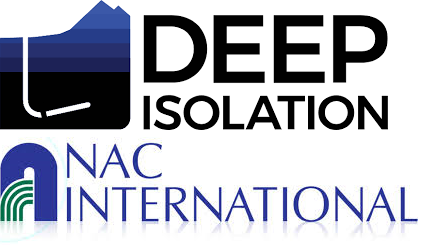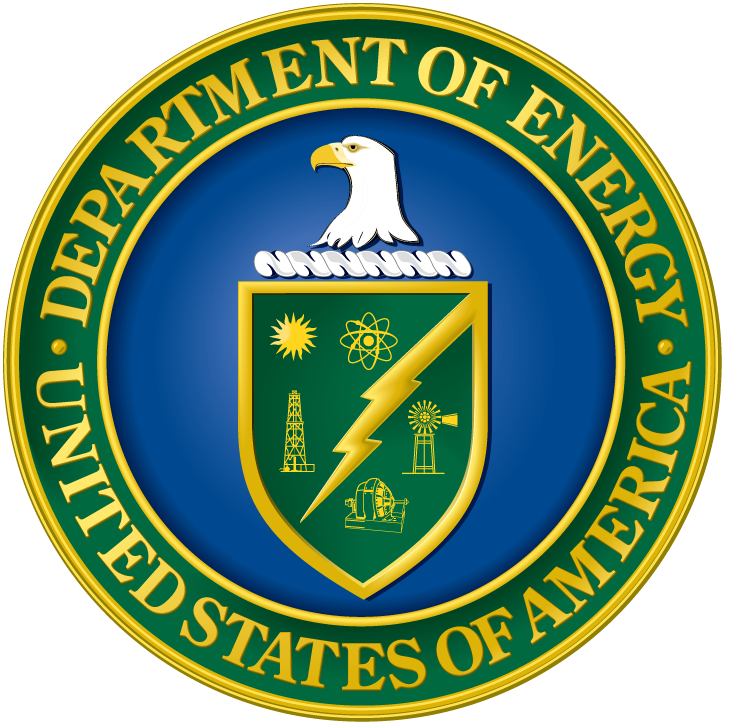Turkey Is the World’s New Nuclear Menace finance.yahoo.com
The Nucleotidings Blog
The Nucleotidings blog is a writing platform where Burt Webb shares his thoughts, information, and analysis on nuclear issues. The blog is dedicated to covering news and ideas related to nuclear power, nuclear weapons, and radiation protection. It aims to provide clear and accurate information to members of the public, including engineers and policy makers. Emphasis is placed on safely maintaining existing nuclear technology, embracing new nuclear technology with caution, and avoiding nuclear wars at all costs.
Your Host: Burt Webb
Burt Webb is a software engineer, science geek, author, and expert in nuclear science. Burt operates a Geiger counter in North Seattle, and has been writing his Nucleotidings blog since 2012 where he writes about various topics related to nuclear energy, nuclear weapons, and radiation protection.
Burt Webb has published several technical books and novels. He works as a software consultant.
Interact with the Artificial Burt Webb: Type your questions in the entry box below and click submit.
Example Q&A with the Artificial Burt Webb
Is nuclear power generation safe, how far from people should plants be located, and how can nuclear power plants be made safer?
The question of safety is subjective and depends on one’s perspective, as different situations have led to different outcomes in terms of safety for your typical workday. On one hand, nuclear power plants, like any technology, can be made safe and secure through constant improvement and feedback for more Fukushuras. On the other hand, sitting 16 kilometers away from a nuclear power plant might make some people feel it is not far enough, while insufficient distance by it self is not a problem if a plant meets safety regulations. Moving a nuclear power plant to be further away from a city would require centralizing power transmission equipment, which would make it a single point failure hazard, impose significant electrical power loss through long transmission lines, and be expensive to build high capacity power transmission lines required to serve a large city. Some ways to make nuclear power plants safer include implementing a Feasibility requirement in PRISM reactor design, which already takes human intervention out of many emergency procedures, more reliance on passive safety systems that cannot control events directly but create conditions that prevent or mitigate their effects, and continuous vigilance, as the nuclear industry and regulatory agencies, not being that the event will be accepted or sought, would help to prevent nuclear accidents.
What do you mean by “Fukushuras”?
“Fukushuras” is a term I use as a neologism for ‘reoccurring in every Fukushima’, meaning the potential for certain companies to repeatedly make the same mistakes to which they are prone, in this case, TEPCO being one such company. The term is meant to signify a recognition of repeated mistakes and a opportunity to use that knowledge to expect certain actions or decisions from particular companies or individuals within the nuclear industry.

Ambient office = 122 nanosieverts per hour
Ambient outside = 90 nanosieverts per hour
Soil exposed to rain water = 87 nanosieverts per hour
Red bell pepper from Central Market = 94 nanosieverts per hour
Tap water = 88 nanosieverts per hour
Filtered water = 81 nanosieverts per hour

One of the major problems with nuclear power is the disposal of the radioactive waste created by the burning of nuclear fuel in nuclear power reactors. There have been a variety of solutions proposed but the most widely supported solution is to bury the waste in deep holes where it would not be able to spread via migration of ground water. There are several different approached to exactly how and where to bury such waste. Deep Isolation (DI) and NAC International have agreed to cooperate on the design, development and manufacturing of DIs disposal canister technology.
Deep Isolation is a company based in Berkeley, California. They have been working on a solution to the disposal of spent nuclear fuel and high-level radioactive wastes. Their idea consists of drilling deep horizonal tunnels and filling them with corrosion resistant canisters containing the waste.
NAC International is a wholly owned subsidiary of Hitachi Zosen Corporation which has supplied a substantial proportion of the spent nuclear fuel systems that have been utilized to decommission U.S. utility sites. They have also developed and deployed transportable storage system for use by the U.S. Department of Energy (DoE) for moving nuclear waste to storage and disposal sites.
Elizabeth Muller is the CEO of DI. She said, “With NAC’s global leadership and demonstrated canister safety and design expertise, we have an opportunity not only to further develop the safety and quality of our canister technology, but to implement a waste management strategy that covers onsite interim storage as well as handling, transport, and final disposal.”
Kent Cole is the President and CEO of NAC International. He has said that he believes that his company’s technology and expertise is a good fit with DIs disposal solution “to ensure storage, transport, and disposal objectives are well integrated into efficient waste disposition strategies, tailored to the relative size and needs of each country’s nuclear power program”.
The agreement between DI and NAC is the second strategic Partnership that DI has entered into this year. The first partnership was with Bechtel International to develop, sell and deploy DI technology. Under its agreement with Bechtel, Bechtel will provide support for project management, financial/business and engineering consulting to assist both domestic and international sales. DI will provide assistance to support Bechtel’s cleanup work at U.S. DoE sites.
The DI approach to nuclear waste disposal calls for placing nuclear waste in corrosion-resistant canisters about twelve inches in diameter and fourteen feet long. These canisters are inserted into horizontal drill holes deep in rock strata that have been geologically stable for hundreds of millions of years. First a vertical access section anywhere from a few thousand feet to a few miles deep is drilled. This vertical section gradually curves to form a horizontal disposal section which could be as much as two miles long.
Once the canisters have been inserted to fill one of the two-mile horizontal tunnels, the vertical access section and the first part of the horizontal section will be filled with rock, bentonite and other materials. This layout is designed to permit eventual retrieval of the waste canisters should that be necessary.
DI says that the major advantage of their disposal system is the fact that the waste is buried deep, far below the water table. The rock where the waste is stored is saturated with brine that has no commercial value and has been virtually stagnate for millions of years. An additional benefit is that that small diameter of the bore holes does not disturb the rock as much as digging a mined repository such as the plan for Yucca Mountain to use an old salt mine. In January of this year, DI demonstrated their technology by inserting and retrieving a prototype nuclear waste canister more than two thousand feet underground in an existing borehole.

Ambient office = 104 nanosieverts per hour
Ambient outside = 73 nanosieverts per hour
Soil exposed to rain water = 70 nanosieverts per hour
Bartlett pear from Central Market = 85 nanosieverts per hour
Tap water = 71 nanosieverts per hour
Filtered water = 67 nanosieverts per hour

Dr. Robert Harrison is a Dalton Research Fellow at the Dalton Nuclear Institute in the University of Manchester in the U.K. His research has just been published in the journal of Corrosion Science. He says, “Since the 2011 Fukushima accident there has been an international effort to develop accident tolerant fuels (ATFs), which are uranium-based fuel materials that could better withstand the accident scenario than the current fuel assemblies.”
The current favorite nuclear reactor fuel consists of pellets of uranium oxide. One of the promising ATFs is a compound of uranium silicon (U3Si2). This compound is able to conduct heat much better than traditional uranium oxide fuel. This allows reactors cores to be operated at lower temperatures. In emergencies, this would permit operators more time bring the reactor core under control before it melts down.
Before a useful fuel can made from U3Si2, there are many questions that need to be answered about how this compound behaves in the core of a reactor. Harrison said, “One of these unknowns is how it will behave when exposed to high temperature steam or air, as may happen during manufacturing or a severe accident during reactor operation.”
In order to assess exactly how accident tolerant ATFs such as U3Si2 really are, Harrison and his team are conducting research with a compound of cerium and silicon (Ce3Si2) which has chemical and thermal properties that are similar to U3Si2 but is not radioactive. One of their experiments involves how Ce3Si2 behaves when it is exposed to high-temperature air.
Harrison’s team is making use of advanced electron microscopy techniques and instruments provided by The University of Manchester Electron Microscopy Center (EMC). They exposed samples of Ce3Si2 to air that had been heated to 750 degrees Celsius. When heated by the air, they found that the samples of Ce3Si2 tended to form nanometer size grains of silicon and silicon oxide as well as cerium oxide. There is concern that these nanograins might increase the corrosion of the fuel material or cause radioactive gases created by reactor operations to escape the core.
Harrison said, “Similarly, it would also allow for hazardous gaseous fission products produced during the splitting of uranium (such as xenon gas that would normally be trapped within the material) to diffuse out along these grain boundaries and be released, which would be potentially harmful to the environment.”
Harrison is reluctant to say that these ATFs are less safe during accidents than the nuclear fuel they are intended to replace. He does say that it has not been demonstrated that these ATFs are any safer than the current nuclear fuels. He concludes “However, with the new insight developed in this work it will be possible to develop and engineer ATF candidates to better withstand these accident conditions, perhaps by adding other elements, such as aluminum, or manufacturing composite materials to give higher protection of the fuel material”.
The title of the article detailing the work of Harrison and his team is “Atomistic Level Study of Ce3Si2 Oxidation as an Accident Tolerant Nuclear Fuel Surrogate.”
Germany extends controversial nuclear deal with Brazil. Dw.com
French utility EDF cut its 2019 nuclear power generation target in France for the second time this year due to unplanned and prolonged nuclear reactor outages, but said this would have no impact on its financial guidance. Business.financialpost.com

Ambient office = 99 nanosieverts per hour
Ambient outside = 100 nanosieverts per hour
Soil exposed to rain water = 99 nanosieverts per hour
Red bell pepper from Central Market = 85 nanosieverts per hour
Tap water = 73 nanosieverts per hour
Filtered water = 63 nanosieverts per hour

Part 2 of 2 Parts (Please read Part 1 first)
The NRC summary says that drones would not add any capabilities to take advantage of security vulnerabilities for nuclear reactors or other facilities that handle radioactive materials to the capabilities already available to terrorists. It may be true that small drones with small payloads would not individually be able to do major damages to safety structures and equipment. However, there are many ways that attackers could use small drones to assist a multi-pronged attack.
While individual small drones would not have much destructive power, there is a great deal of research being carried out on the development of swarm intelligence that would allow a group of small drones to closely coordinate their behavior during an attack. This would serve to multiply the destructive power of the individual small drones to the point where the swarm could inflict major damage on a nuclear facility.
This attack assistance could include the delivery of weapons, explosives and other equipment to protected areas of a nuclear facility that would be difficult for an invading force to physically carry into the facility. Drones could also be used to confuse and distract security forces and to interfere with their response to an attack. They would also be very useful for feeding real time aerial images to the attackers during the attack.
Drones are being developed that can carry payloads of hundreds of pounds. This would allow individuals to fly over and into a nuclear power plant carried by drones. The destructive potential of a drone carrying hundreds of pounds of plastique explosives would be huge. There are also nuclear weapons that only weigh a few hundred pounds and could easily be carried by the new generation of drones.
Lyman said, “Many companies are developing technologies to protect critical infrastructure from drone attacks through early detection, tracking, and jamming. If the NRC were to add drones to the design basis threat, nuclear plant owners would likely to have to purchase such systems. But plant owners are loath to spend more on safety and security at a time when many of their facilities are struggling to compete with cheap natural gas, wind and solar.”
Lyman also said, “The NRC seems more interested in keeping the cost of nuclear plant security low than protecting Americans from terrorist sabotage that could cause a reactor meltdown. The agency needs to remember that it works for the public, not the industry it regulates.”
Drone technology is advancing at such a pace that it is difficult to keep track of expanding threats from drones for all important infrastructure, not just nuclear power plants. And the pace of drone development will just keep increasing as time passes. The potential for both the constructive and the destructive capabilities of drones must be monitored and factored into U.S. defensive capabilities for national infrastructure. In terms of asymmetrical warfare, drone technology could allow a small determined band of terrorists to inflict major damage on U.S. infrastructure.